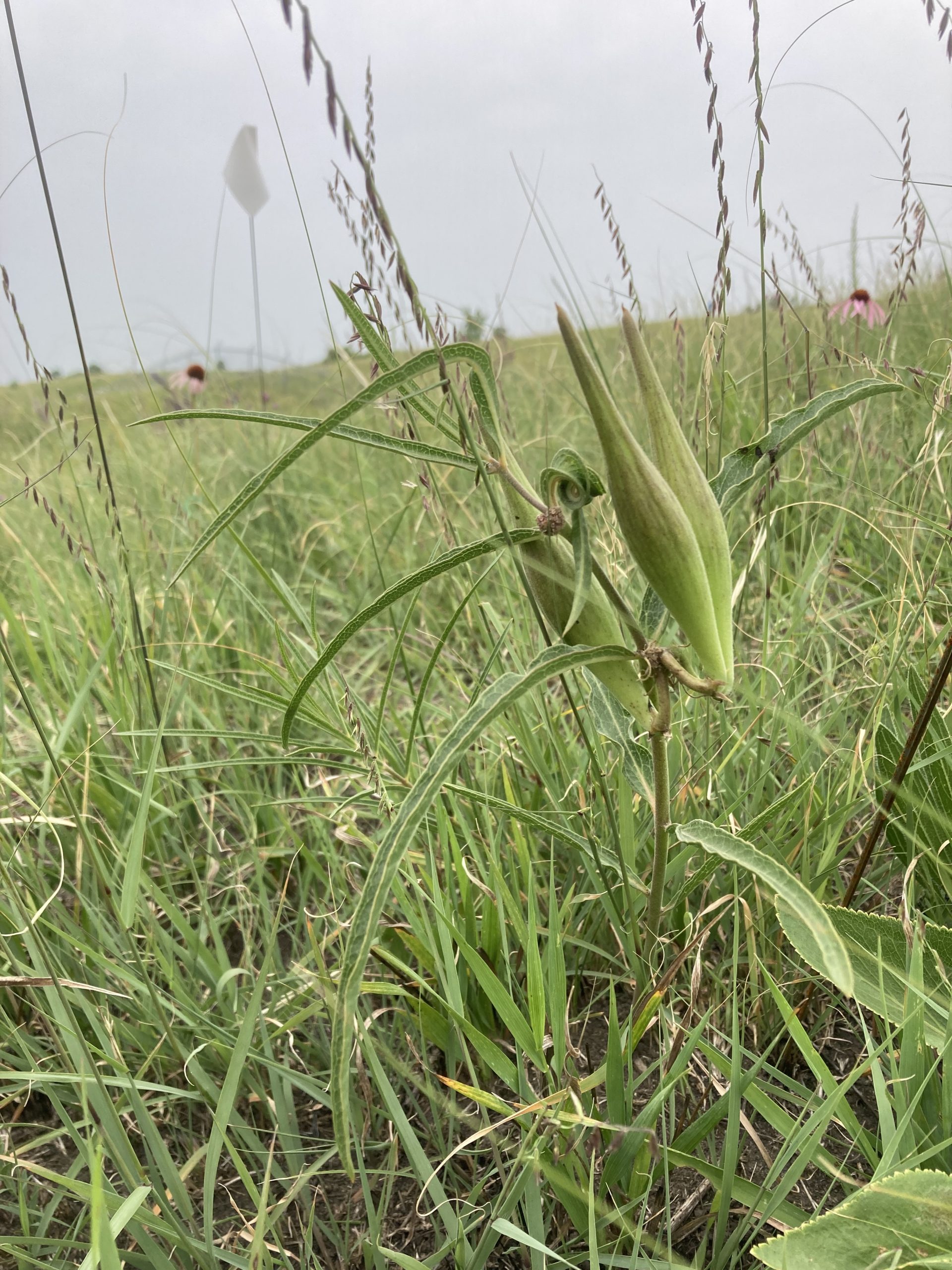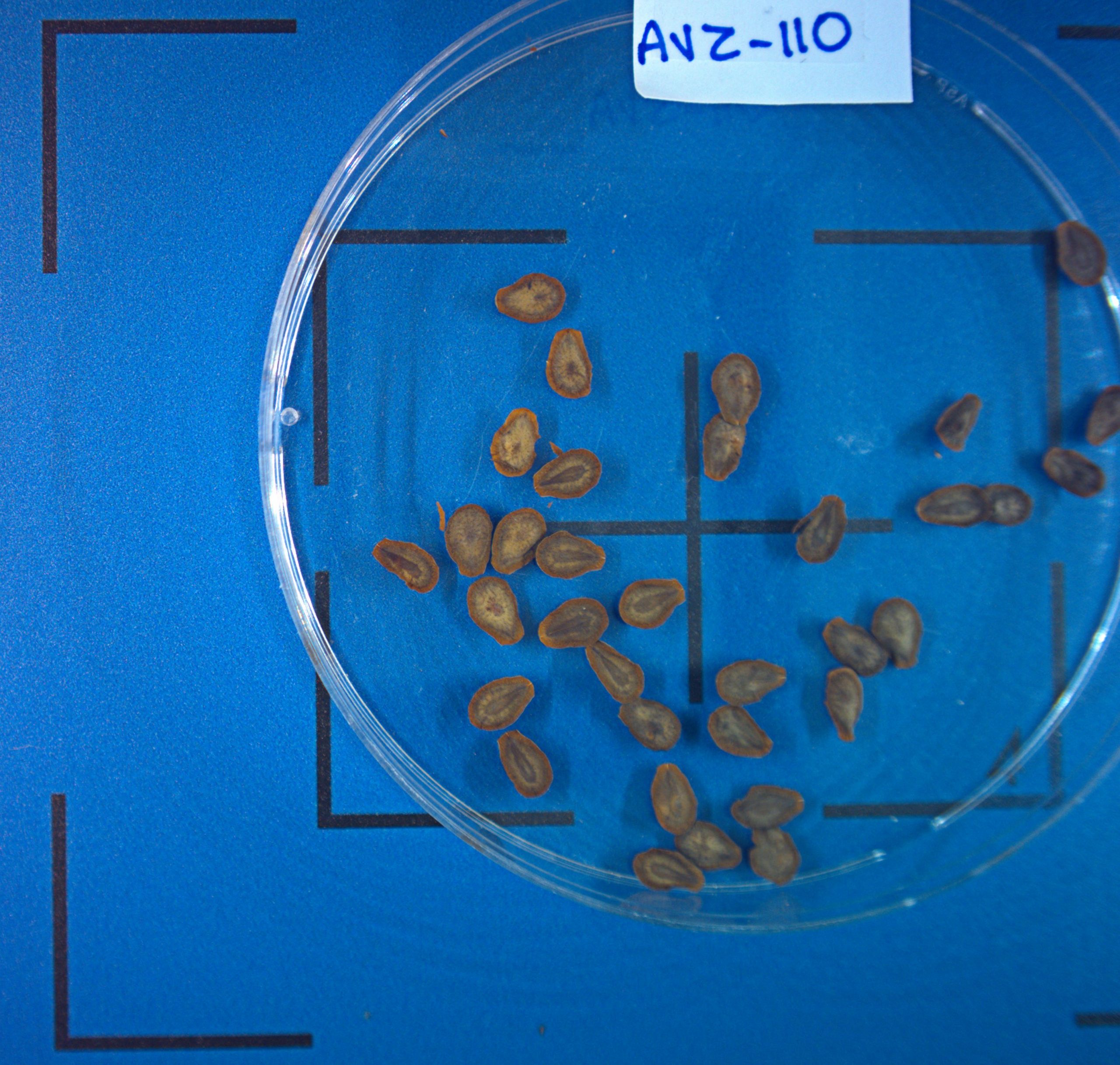This summer we harvested seed pods from 25 Green Milkweed (Asclepias viridiflora) plants in the study area. Green Milkweed is uncommon and seems to be declining in our study area. This species prefers similar habitat to Echinacea. Plants tend to be sporadically distributed across dry prairies on steep hillsides, sandy soils, and well-drained gravelly areas. Our experience has been that flowering plants often fail to produce seed. We rarely find more than a handful of plants that produce pods in a given year.
After harvesting and drying seeds, Jared cleaned seed by removing their fluffy coma. Jared then counted all the seeds and randomly selected a minimum of 30 seeds for x-raying. X-rays revealed variation. Some ovules lacked an embryo , others had whole, intact embryos. Many ovlues fell somewhere in between. They contained embryos that were undersized, shriveled, or fragmented. There was no external evidence of seed predation. The proportion of full ovules ranged from 0 to 100 percent. We are not sure whether “partials” reflect resource limitation and seed abortion, a form of late-acting self-incompatibility, or something else entirely. We are doing some research to help us interpret the biology underlying these patterns.
After cleaning, counting, and classifying, Jared prepared a subset of Green Milkweed seed for germination. CBG’s production greenhouse will germinate and grow 392 milkweed seedlings representing 15 maternal lines. We will plant these seedlings in an area south of P8. Although these plants grow slowly, our hope is that they will be an excellent resource for investigating milkweed pollination in a couple years. We also hope to harvest seed from these plants and include Green Milkweed in our seed mixes for restoration!





Leave a Reply